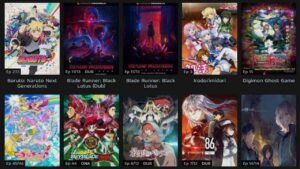Kashito Toto is a name that has grown steadily in influence, capturing the attention of diverse audiences worldwide. This article delves into the background, evolution, and significance of Kashito Toto as a cultural phenomenon, exploring its roots, transformation over time, and its impact on various aspects of society. Whether you are familiar with the term or hearing it for the first time, this comprehensive exploration offers an insightful understanding of Kashito Toto, a term that has found its way into multiple realms of art, media, and culture.
Origins of Kashito Toto
The term “Kashito Toto” has a somewhat mysterious origin, as it is a fusion of words that evoke a sense of mysticism, tradition, and innovation. Breaking it down.
Kashito
This part of the name has historical and cultural connotations. It is speculated that it draws from ancient linguistic traditions, possibly connected to East Asian or African dialects, symbolizing something precious, mysterious, or exotic. The etymological roots of “Kashito” can be traced to words that connote treasure, mystery, or hidden knowledge.
Toto
In contrast, “Toto” can be linked to more contemporary or pop-cultural associations. It brings to mind various meanings across languages and cultures—from the Latin “tōtus,” meaning “whole,” to associations with various animals (e.g., the dog from “The Wizard of Oz”), to its relevance in modern digital culture where it often represents playful, whimsical, or mythical characters.
Together, Kashito Toto represents a fusion of the old and the new, the sacred and the mundane, merging traditions with modernity, and the local with the global.
Cultural Significance
While the exact meaning of Kashito Toto may remain elusive, the cultural significance is more tangible. The rise of Kashito Toto can be linked to various artistic movements that celebrate hybrid identities, cross-cultural exchanges, and the blending of genres. Artists, writers, filmmakers, and even musicians have embraced the concept of Kashito Toto as a way of expressing the fluid nature of identity and the blending of different cultural, racial, and social identities.
In the art world, Kashito Toto is seen as a metaphor for cultural fusion. Whether it’s through visual art, literature, or cinema, the theme of Kashito Toto invites creators to transcend traditional boundaries, blending aesthetics, traditions, and mediums. This fusion creates a space where ideas that may seem incompatible at first glance coalesce into something wholly unique. For example, many modern art pieces that fall under the “Kashito Toto” umbrella often juxtapose traditional, almost ritualistic symbols with cutting-edge digital techniques, resulting in art that feels simultaneously ancient and futuristic.
Kashito Toto in Modern Media
Beyond art, Kashito Toto has made a notable appearance in media and entertainment. In particular, several digital platforms and content creators have embraced the concept as part of a growing trend towards postmodern storytelling. In postmodern narratives, storytellers deconstruct traditional forms and tropes, often blending genres and playing with time, space, and linearity. Kashito Toto represents this fluid narrative approach, as stories that align with its ethos frequently jump between epochs, locations, and realities without adhering to a rigid structure.
Video Games
One of the most prominent representations of Kashito Toto can be seen in the world of video games. Game developers have embraced the flexibility of Kashito Toto to design open-world games that transcend conventional geographical or temporal limitations. These games often feature protagonists who can time travel, switch between dimensions, or operate in universes where the normal laws of physics don’t apply. The aesthetic choices in these games, from character design to environmental storytelling, reflect the Kashito Toto concept of a world where multiple, seemingly incompatible elements coexist harmoniously.
Cinema and Animation
Kashito Toto has also made a significant impact in the film industry. Independent filmmakers and animators, in particular, have used the concept to develop stories that blend fantasy, mythology, and modern-day concerns. Animated series that utilize Kashito Toto concepts often feature worlds where ancient myths come to life in urban environments, where modern technology coexists with ancient magic, and where characters embody a blend of cultural heritages.
The Philosophy of Kashito Toto
At the heart of Kashito Toto lies a philosophy that resonates with modern concerns about identity, belonging, and diversity. As the world becomes increasingly interconnected through globalization and digital platforms, traditional notions of identity—whether national, ethnic, or personal—are constantly being challenged. Kashito Toto symbolizes this blending of identities, as individuals can now draw on multiple cultural, social, and historical sources to shape their own sense of self.
One way to view Kashito Toto philosophically is through the lens of postcolonial theory. As more and more artists and thinkers challenge the legacy of colonialism and imperialism, Kashito Toto represents a move towards decolonizing the mind. The blending of cultural forms inherent in the idea challenges the traditional binaries of “colonizer” and “colonized,” “modern” and “traditional,” creating a space where these terms lose their meaning in favor of something more fluid and interconnected.
Kashito Toto also aligns with the concept of hybridity, as discussed by theorists like Homi Bhabha. Hybridity refers to the merging of different cultural elements into something new, which cannot be easily categorized or pinned down. It is through this hybrid space that new forms of identity and creativity emerge, offering a critique of rigid structures of power and authority.
In the context of modern identity politics, Kashito Toto reflects the concerns of individuals who do not fit neatly into one category or another. As more people around the world identify as multiracial, multicultural, or non-binary, Kashito Toto offers a language for describing these experiences of fluidity. It celebrates the idea that identity is not fixed, but rather is a continual process of becoming, evolving, and adapting to changing circumstances.
The Aesthetic of Kashito Toto
The visual and sensory elements associated with Kashito Toto are equally important in understanding its impact. Artists and designers who identify with this movement often blend natural and man-made elements, creating works that are equally organic and technological. This aesthetic is often described as “biomechanical” or “cyber-organic,” combining elements of the natural world with futuristic, machine-like qualities.
Fashion
In the world of fashion, Kashito Toto has become synonymous with a blend of traditional garments and modern, streetwear-inspired designs. Designers draw on indigenous clothing patterns, ancient materials like silk or linen, and mix them with futuristic fabrics, metallic hues, and asymmetrical cuts. The result is clothing that feels both ancient and futuristic, paying homage to traditions while pushing boundaries.
Architecture and Urban Design
Kashito Toto has also influenced architecture and urban planning, particularly in cities that emphasize sustainability and green living. Buildings designed under the Kashito Toto philosophy often incorporate natural elements, such as living walls and open-air structures, alongside cutting-edge technologies like solar panels and smart glass. These buildings blur the line between indoor and outdoor spaces, much like Kashito Toto blurs the lines between cultural influences.
Music and Sound
Musicians associated with Kashito Toto blend genres that would traditionally be seen as incompatible. For example, some artists combine ancient folk instruments like the sitar or the balafon with modern electronic beats and production techniques. The result is music that is hard to classify, mixing influences from different eras and regions to create something new.
Kashito Toto and Globalization
The rise of Kashito Toto can be understood within the broader context of globalization. As people, cultures, and ideas move across borders more fluidly than ever before, the blending of different influences becomes inevitable. Kashito Toto reflects this new global reality, where people are exposed to a wide range of cultural forms, and are increasingly able to choose which elements they want to incorporate into their own lives.
This process of cultural fusion, however, is not without its challenges. Some critics of Kashito Toto argue that it can lead to cultural appropriation, where dominant groups take elements from marginalized cultures without respecting their original context. Others worry that the blending of cultural forms under globalization can lead to the homogenization of culture, where unique traditions are lost in favor of a global, capitalist monoculture.
However, proponents of Kashito Toto argue that this fusion can also be empowering, as it allows people to craft their own identities in a world where traditional categories no longer apply. By blending influences from different cultures, people can create something new that is reflective of their personal experiences, rather than being constrained by rigid definitions of culture or identity.
Conclusion
As the world continues to evolve and people search for new ways to express their identities in an increasingly complex and interconnected world, Kashito Toto will likely continue to grow in influence. Its blend of the old and the new, the local and the global, and the natural and the technological speaks to the realities of modern life. It offers a vision of a world where boundaries—whether between cultures, identities, or artistic genres—become fluid, and where the blending of different influences can lead to new forms of creativity and expression.
In the years to come, we can expect Kashito Toto to have a continued impact on art, media, philosophy, and identity. As more people embrace the philosophy of hybridity and fluidity, Kashito Toto will likely serve as both a symbol and a tool for navigating the complexities of the modern world. Whether through fashion, music, architecture, or personal identity, the legacy of Kashito Toto will continue to shape our cultural landscape for generations to come.













+ There are no comments
Add yours